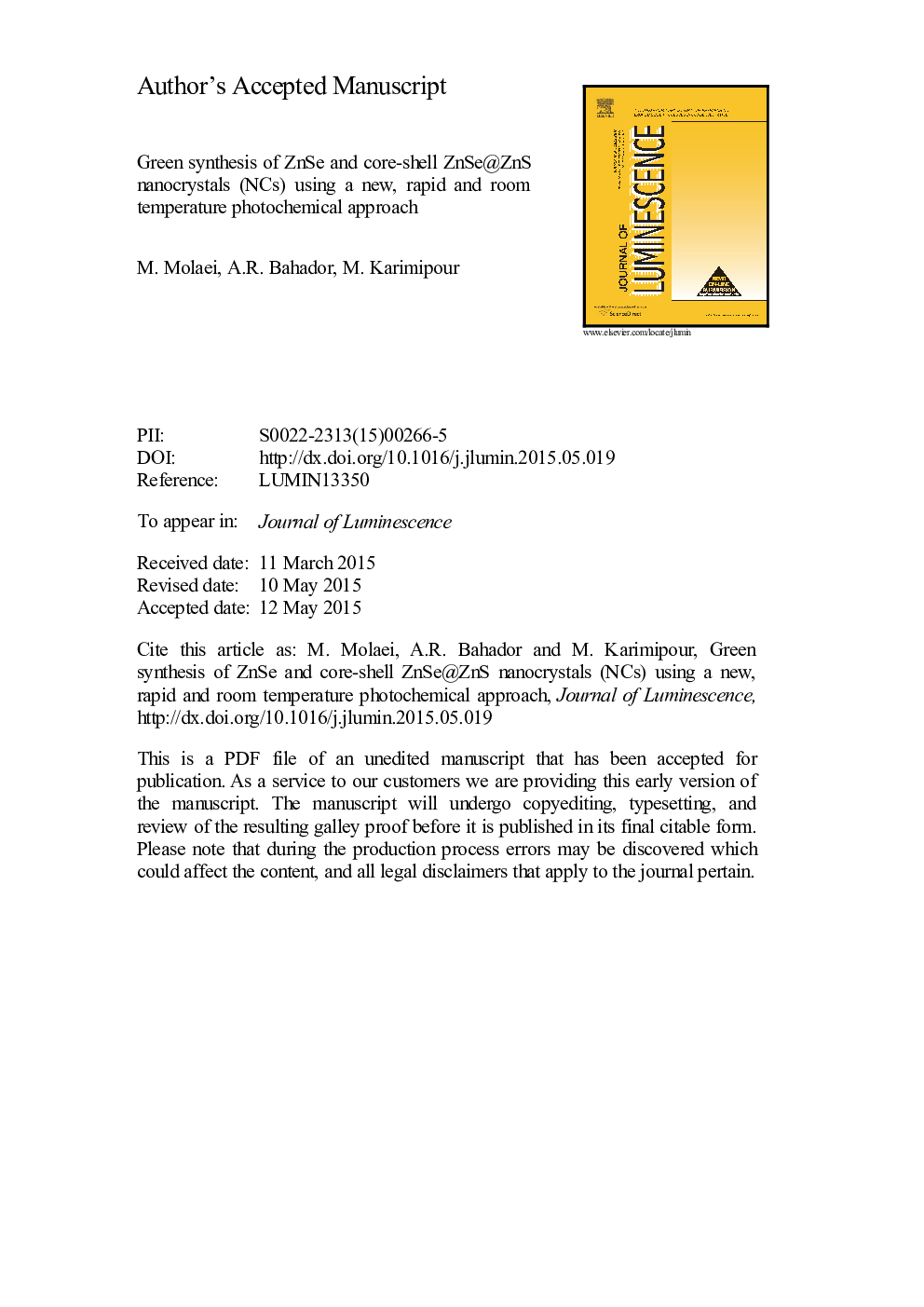| Article ID | Journal | Published Year | Pages | File Type |
|---|---|---|---|---|
| 5398725 | Journal of Luminescence | 2015 | 19 Pages |
Abstract
In this work, ZnSe and core-shell ZnSe@ZnS nanocrystals (NCs) were synthesized using a one-pot, rapid and room temperature photochemical method. UV illumination provided the required energy for the chemical reactions. Synthesized NCs were characterized using X-ray diffraction spectroscopy (XRD), transmission electron microscopy (TEM), UV-vis and photoluminescence (PL) spectroscopy. XRD pattern indicated cubic zinc blende structure for ZnSe NCs and the TEM image indicated round-shaped particles, most of which had a diameter of about 3Â nm. Band gap of ZnSe NCs was obtained as about 3.6Â eV, which was decreased by increasing the illumination time. Synthesized NCs indicated intensive and narrow emission in the UV-blue area (370Â nm) related to the excitonic recombination and a broad band emission with a peak located at about 490Â nm originated from the DAP (donor-acceptor pairs) recombination. ZnS shell was grown on ZnSe cores using a reaction based on the photo-sensitivity of Na2S2O3. For ZnSe@ZnS core-shell NCs, XRD diffraction peaks shifted to higher angles. TEM image indicated a shell around cores and most of the ZnSe@ZnS NCs have a diameter of about 5Â nm. After the ZnS growth, ZnSe excitonic emission shifted to the longer wavelength and PL intensity was increased considerably. PL QY was obtained about 11% and 17% for ZnSe and ZnSe@ZnS core-shell QDs respectively.
Related Topics
Physical Sciences and Engineering
Chemistry
Physical and Theoretical Chemistry
Authors
M. Molaei, A.R. Bahador, M. Karimipour,
